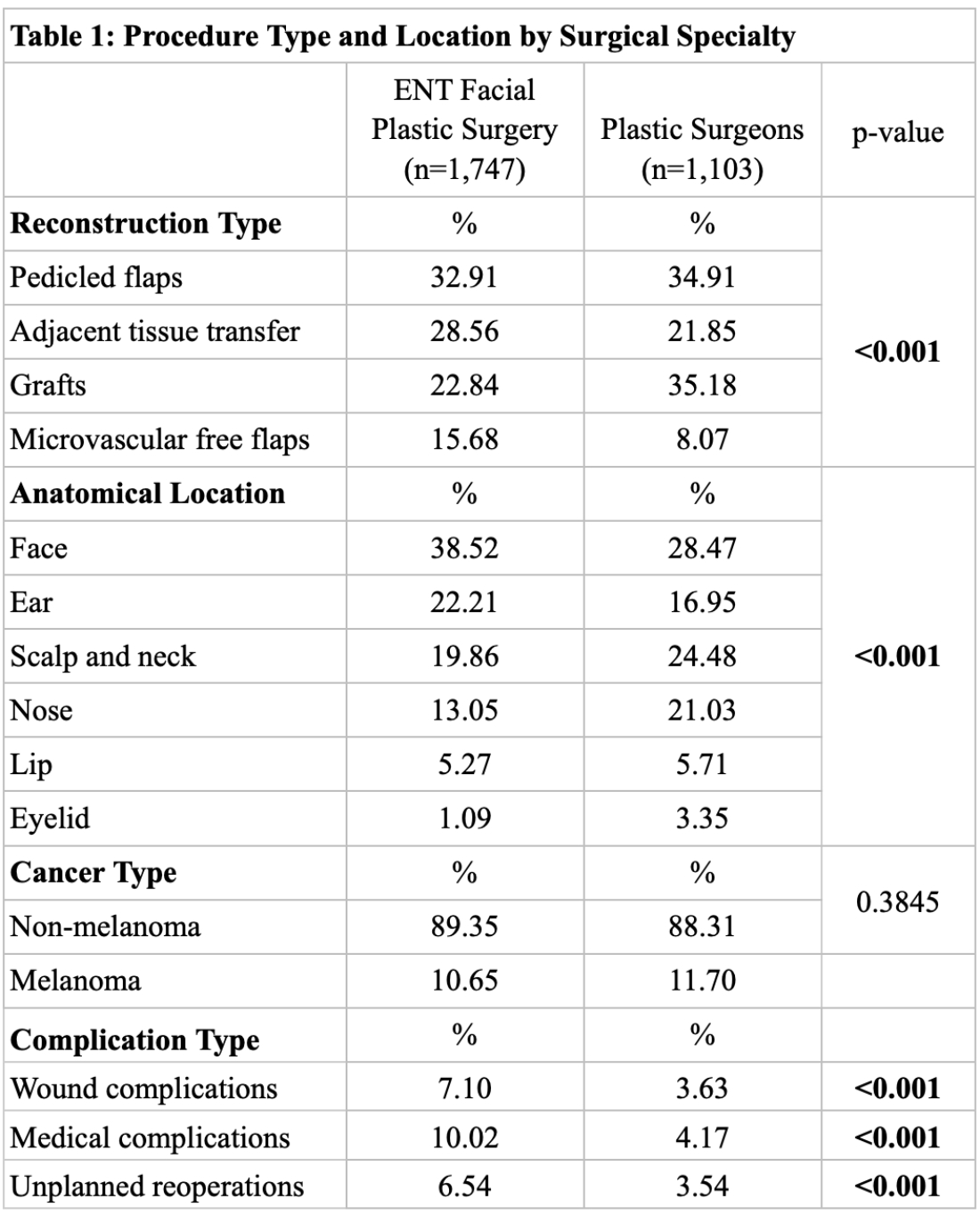Skin Cancer Reconstruction of the Head, Neck, and Face: Does Surgical Specialty Matter?
Sarah Diaddigo*, Alexander Dagi, Oscar Trujillo
Columbia University, New York, NY
Reconstructive procedures of the head, neck, and face following skin cancer resection are typically performed by surgeons trained in either ENT Facial Plastic Surgery or Plastic and Reconstructive Surgery. We analyzed a large national database to compare patient populations, practice, and outcomes of skin cancer reconstruction of the head, neck, and face performed by these two specialties.
Cases were selected from the American College of Surgeons National Surgical Quality Improvement Program (NSQIP). Patient characteristics and perioperative variables that differed significantly between the two specialties on univariate analysis were included in a nominal logistic regression, with occurrence of at least one wound complication, medical complication, or unplanned reoperation within 30 days as the dependent variables.
There were 2,850 cases, with the majority performed by ENT (61.36%). The Plastic Surgery cohort had a greater proportion of white (p=0.036) and female (p<0.001) patients. The ENT cohort was at higher risk with regard to ASA class (p<0.001), immunosuppression (p=0.043), and current smoker status (p=0.003). ENT Facial Plastic Surgeons had lengthier operative times (p<0.001) and longer hospital stays (p<0.001). There was significant variation in reconstructive technique as well as anatomical location of the defect (Table 1). While the ENT cohort had higher rates of adverse outcomes, surgical specialty was not a predictor of complications on multivariate analysis. Rather, operative times greater than six hours, reconstruction of the nose, and the use of microvascular free flaps predicted all-cause complication risk.
Reconstruction of the head, neck, and face following skin cancer removal represents an important and common element in the scope of practice of both ENT Facial Plastic Surgeons and Plastic Surgeons. Surgical specialty should not be seen as an important indicator of the likelihood of successful reconstruction.
Back to 2023 Abstracts


